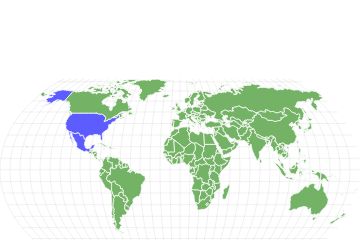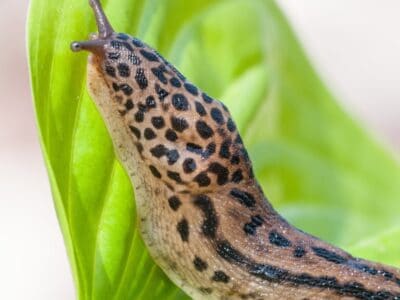Death’s Head Cockroach
Blaberus craniifer
People buy Death's Head Cockroach nymphs and raise them as pets!
Advertisement
Death’s Head Cockroach Facts
- Prey
- insects
- Name Of Young
- Nymphs
- Group Behavior
- Gregarious
- Fun Fact
- People buy Death's Head Cockroach nymphs and raise them as pets!
- Estimated Population Size
- Millions
- Biggest Threat
- birds, reptiles
- Most Distinctive Feature
- Skull shaped mark on its carapace
- Other Name(s)
- True Death’s Head Cockroach
- Gestation Period
- 3 - 4 weeks
- Litter Size
- 34 eggs
- Habitat
- Woods, forests, jungles
- Predators
- Birds, reptiles, spiders
- Diet
- Omnivore
- Type
- Insect
- Common Name
- Death’s Head Cockroach
- Group
- Gregarious
View all of the Death’s Head Cockroach images!
Death’s Head Cockroach Summary
“This cockroach is often kept as a pet.”
The Death’s Head Cockroach is a large winged insect which is native to Mexico , the West Indies, and Central America. It has also been introduced into Florida . There is a small black patch on their head that looks like a “Death’s head.” Although they have black wings, they are not considered a flying cockroach species, though they do use the wings to glide from higher places down to lower ones. Even though cockroaches are usually considered pests, the Death’s Head Cockroach is often kept as a pet, either alone or with a few others in a group.
Death’s Head Cockroach Facts
- Death’s Head Cockroaches can grow over two inches in length.
- A True Death’s Head Cockroach may sometimes be confused with the Discoid Cockroach (False Death’s Head Cockroach), which has a much simpler black patch on its head and much paler wings.
- Death’s Head Cockroaches have a black, face or skull shaped marking on their heads, from which they get their unusual name.
- Death’s Head Cockroaches are the largest cockroaches found in North America.
- A Death’s Head Cockroach can live up to 1 year.
Death’s Head Cockroach Species, Types, and Scientific Name
The Death’s Head Cockroach’s scientific name is Blaberus craniifer and though there are many cockroach species, there is only one species considered a True Death’s Head Cockroach. This type of cockroach has a very distinctive mark from which it gets its name. Its mark also informs its scientific name, since Craniifer is Latin for “Carrier of the head.”
Appearance: How To Identify Death’s Head Cockroach
A Death’s Head Cockroach is approximately two inches long and dark brown bordering on black. Its body is in the shape of a long oval. On the paler brown pronotum, or the head portion of the exoskeleton, the Death’s Head Cockroach has a black marking with reddish orange spots which resembles a skull or perhaps a jack-o-lantern. They can be confused with the Discoid Cockroach (Blaberus discoidalis), also known as the False Death’s Head Cockroach because of their similar appearance. The reason for this is that the Discoid also has a black patch on its head, but it is only a patch and it does not have the additional red marks that give the black patch on a Death’s Head Cockroach the appearance of a face. They also do not have the black wings of a True Death’s Head Cockroach.
Habitat: Where to Find Death’s Head Cockroach
Death’s Head Cockroaches primarily live in Central America and in Florida. Their habitat is woodlands and forests, where they can live under leaves and debris and in old decaying logs. When Food is scarce, they may even eat the rotting wood for sustenance until they find better food. They prefer warm, humid climates, and when they are cared for as pets, their enclosure needs to be hot and damp.
Diet: What Do Death’s Head Cockroach Eat?
Death’s Head Cockroaches are omnivores whose diet consists mainly of vegetation, carrion, smaller insects, and sometimes wood or even feces. They can consume up to half their own weight in food at a time. When some cares for Death’s Head Cockroaches as pets, these roaches will happily eat pet food, moistened cereal, and a variety of fruits and vegetables. In the wild, Death’s Head Cockroaches are prey to anything that consumes insects, such as birds, reptiles, spiders, and amphibians.
View all 110 animals that start with D
Death’s Head Cockroach FAQs (Frequently Asked Questions)
Millions
The Death’s Head Cockroach is a species of large cockroach with black wings and a black “Death’s Head” spot on its thorax.
Why is it called the death's head cockroach?
It is called the Death’s Head Cockroach because it has a mark on its thorax that looks like jack-o-lantern or skull.
What does the death's head cockroach eat?
A Death’s Head Cockroach will eat nearly anything organic, as they have omnivorous diets.
Do death's head cockroaches fly?
No, Death’s Head Cockroaches do not fly, despite having black wings, but they can use their wings to glide in the air for limited distances.
Thank you for reading! Have some feedback for us? Contact the AZ Animals editorial team.


















